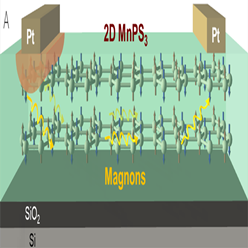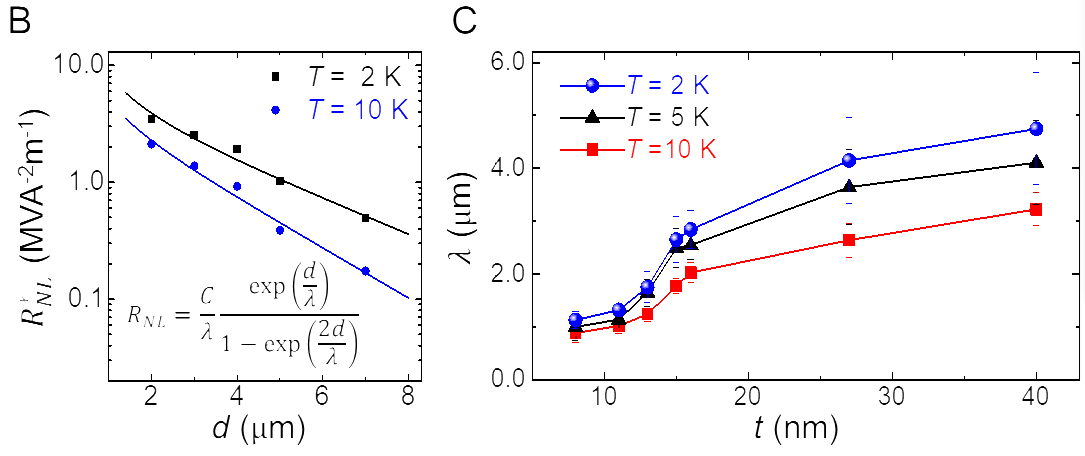Peking University, Feb. 22, 2019: In recent years, magnonics has emerged as a potential new platform for computation as well as for information transport. Whereas electronics achieve this via the manipulation of charge, magnonics could encode data in propagating waves of electron spin orientation known as magnons, which makes non-dissipative data processing possible. Progress in this field relies greatly on the discovery of materials that are capable of supporting magnons transport over a long distance. Different from 3D magnetic insulators, such as Yttrium Iron Garnet, which are under investigation, 2D magnets offer special platforms for very intriguing quantum transport phenomena, including the spin Nernst effect, topological and Weyl magnons that have already been intensively studied theoretically.
In this recent work published in Physical Review X, Han Wei’s group, affiliated with the International Center for Quantum Materials (ICQM), made an important progress in 2D magnets by reporting the experimental observation of long-distance magnon transport in MnPS3, a quasi-two-dimensional van der Waals antiferromagnet, in which van der Waals forces provide the interaction between atomic layers -- similar to graphene prepared from graphite. The magnon transport in the quasi-2D van der Waals antiferromagnet MnPS3 is measured using the nonlocal geometry as shown in Figure A. The magnons are generated in quasi-2D van der Waals antiferromagnet MnPS3 under the left Pt electrode and are detected by the right Pt electrode (magnon detector). They observe magnons diffusing several micrometers across the sample, from one platinum electrode to another. The magnon transport is in good agreement with the exponential decay of magnon-dependent chemical potential expected theoretically (Figure B). As the quasi-2D MnPS3 thickness decreases from 40nm to 8 nm, the magnon diffusion length also decreases from about 4 mm to 1 mm (Figure C). This behavior could be attributed to enhanced magnon scattering off surface impurities in the thinner flakes.


Figure: Long-distance magnon transport in quasi-2D antiferromagnet MnPS3. (A) Schematic of nonlocal magnon transport and detection in the quasi-2D MnPS3. (B) The spacing dependence of the nonlocal spin signals, which agrees well with the exponential decay expected theoretically. (C) The MnPS3 thickness dependence of the magnon relaxation length.
These experimental results have demonstrated that 2D van der Waals magnets are a new platform for magnonics applications and could pave the way for exploring magnon-dependent quantum phenomena in 2D magnets.
This work has been published in Physical Review X on February 7th, 2019 (Phys. Rev. X 9, 011026, (2019)). DOI: https://doi.org/10.1103/PhysRevX.9.011026. This work is proposed and supervised by Professor Han Wei. The first author is Xing Wenyu, a fourth-year doctoral student of the International Center for Quantum Materials. The second author is Qiu Luyi, a fourth-year undergraduate of School of Physics, who will join Harvard University to pursue her PhD this September. The work benefits a lot from the discussion and help from Professor Jia Shuang and Professor Xie Xin-Cheng of the International Center for Quantum Materials. The research is financially supported by National Basic Research Programs of China, National Natural Science Foundation of China and the Strategic Priority Research Program of the Chinese Academy of Sciences.
Edited by: Huang Weijian
Source: International Center for Quantum Materials

